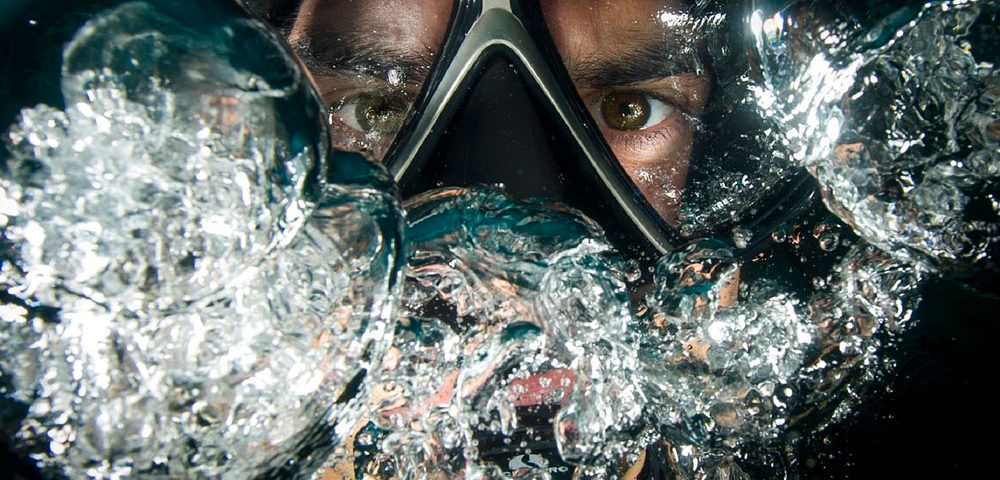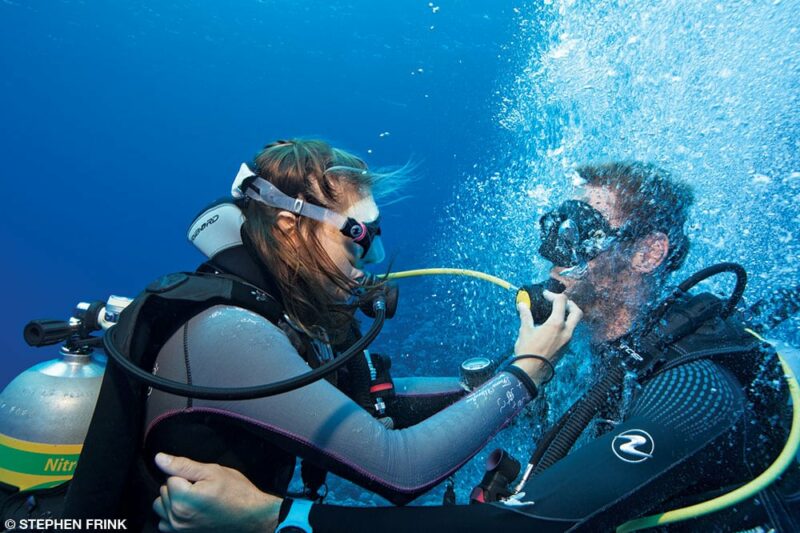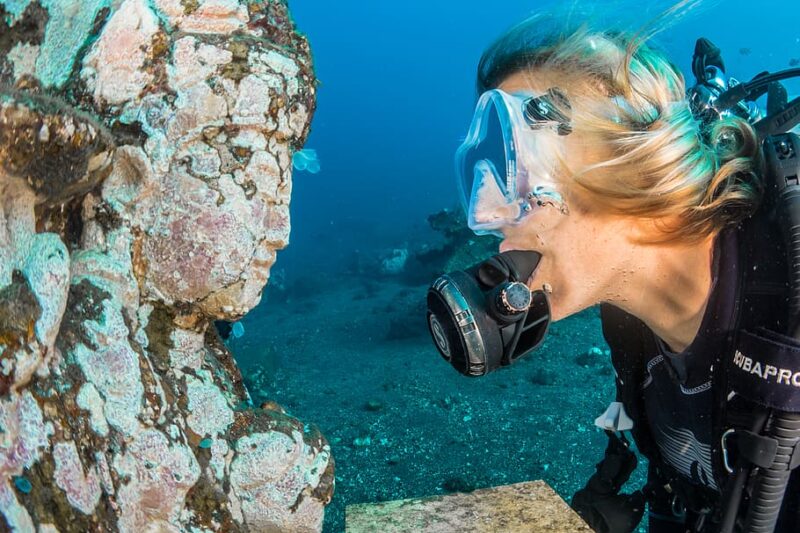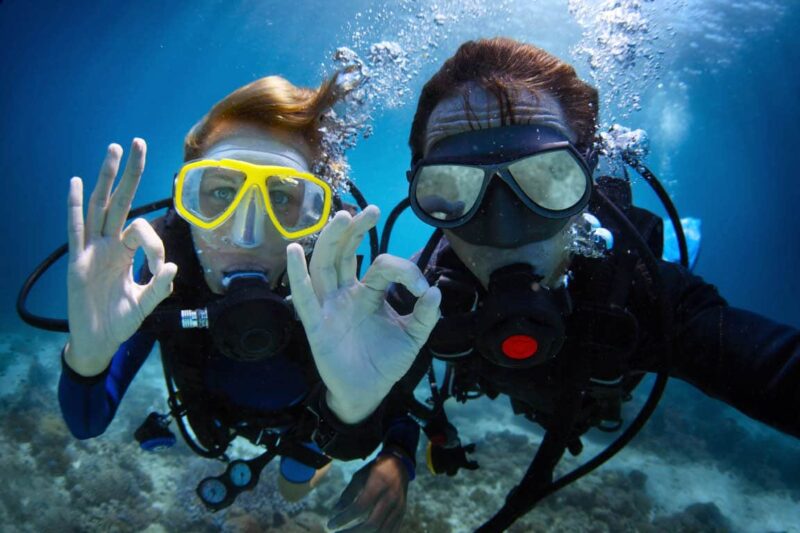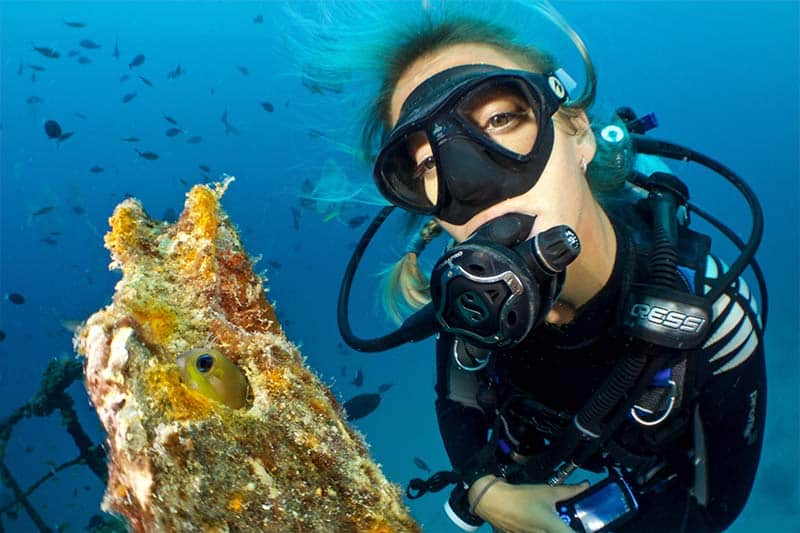2. Top Scuba Tech Tips to Improve Air Consumption
Here are the top scuba tech tips to help you improve your diving air consumption, making your dives longer, more efficient, and enjoyable:
- Buoyancy Control. Don’t float like a cork or sink like an anchor. Find your balance, and you’ll see how everything improves.
Achieving proper buoyancy control , is one of the most effective ways to reduce your diving air consumption. When you can hover effortlessly in the water, you avoid unnecessary movements that consume extra air. Perfecting neutral buoyancy allows you to relax, move gracefully, and breathe more steadily. Use a balanced amount of weight, practice controlled fin movements, and adjust your breathing to fine-tune buoyancy. The less you move, the less air you’ll use. Imagine being weightless, calmly exploring without effort—that’s the goal.
- Optimize Your Gear. How much drag are you creating in the water? Have you noticed? Well, there’s a good reason why you’re consuming so much air.
One of the most overlooked scuba tech tips is streamlining your dive gear. Bulky equipment and poorly positioned accessories create drag, forcing you to exert more energy to move through the water. This, in turn, increases your air consumption. Organize your gear so that everything fits close to your body, reducing water resistance. Consider investing in more hydrodynamic gear or compact your setup for smoother dives. Less drag means less effort—and ultimately, less air usage.
- Breathe Like a Zen Monk. Slow, deep, and calm. No hyperventilating as if you’re running a marathon underwater.
Your breathing pattern directly influences your diving air consumption. Slow, deep breaths help maintain a steady supply of oxygen and reduce carbon dioxide buildup in your body. One of the most useful scuba tech tips is to practice diaphragmatic breathing (also known as yoga breathing), where your abdomen expands with each breath rather than your chest. This technique allows you to take full breaths and use air more efficiently, reducing the number of inhalations needed during a dive. With practice, you’ll be amazed at how much longer you can stay underwater.
- Plan Your Dive. Don’t jump into the water recklessly. Planning well saves you effort and, of course, air.
Good dive planning can greatly improve your air consumption. By mapping out a profile with gradual ascents and descents, you minimize the amount of air required for buoyancy adjustments. Shallow dives also consume less air than deep ones, so plan your dive route accordingly. Regularly check your air supply—early and often. For example, perform your first air check 15 minutes into the dive, then every 10-15 minutes after. This approach allows you to track whether you’re meeting the dive plan expectations and make real-time adjustments. Remember, shallower dives equal more bottom time, which translates to a better experience.
- Get in Shape. No, you don’t need to be an Olympic athlete, but being fit will help you use less air.
Physical fitness plays a huge role in controlling diving air consumption. The fitter you are, the more efficiently your body uses oxygen. Cardiovascular training, such as swimming or running, helps strengthen your lungs and heart, allowing you to dive with a lower heart rate and use less air. Additionally, maintaining good health and hydration keeps you calm and relaxed underwater, further helping your air consumption. The goal is to dive as effortlessly as possible, and staying fit is one of the best scuba tech tips for achieving that.




